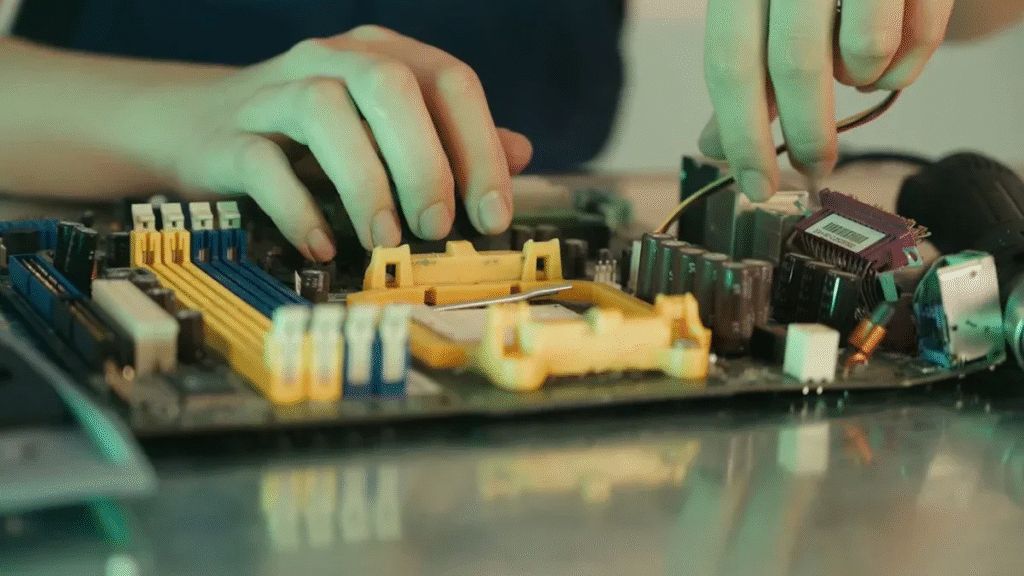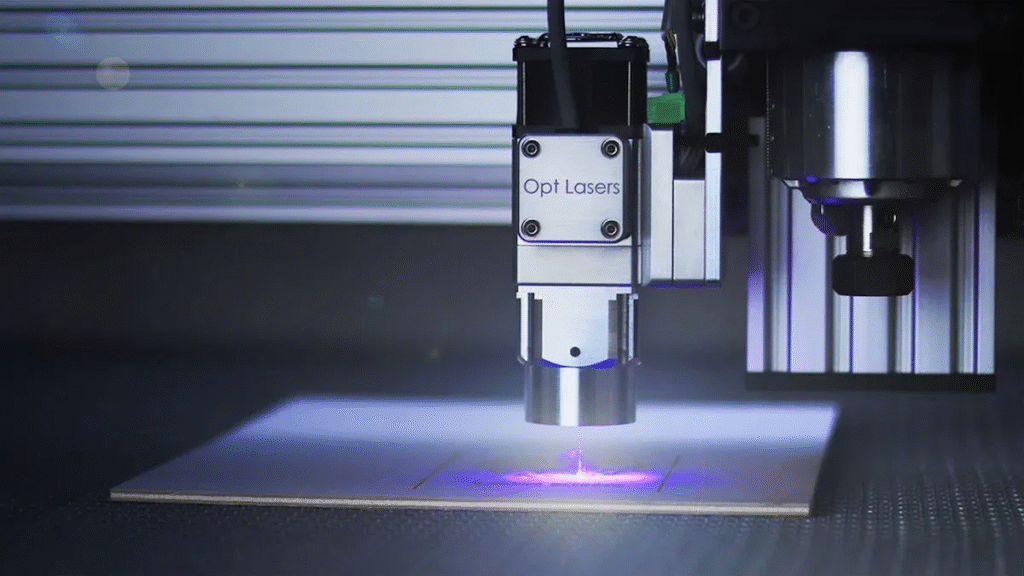When your laser cutter loses power or behaves unexpectedly, you may need to consider a CO2 laser tube replacement. Regular maintenance is essential to prevent sudden issues. Most CO2 laser tubes have a lifespan of 2.000 ila 10.000 saat, depending on their quality and usage. Use this checklist to assess your situation:
- Has your tube lasted as long as it should?
- Do you notice that it does not cut as effectively?
- Are there any visible cracks or leaks?
- Does the machine fail to start or produce a weak beam?
Evaluating these factors will help you determine if a CO2 laser tube replacement is necessary.
Önemli Çıkarımlar
- Check your CO2 laser tube often for problems, like weak cutting or damage you can see. This helps you know when to change it.
- Get your workspace ready and collect all the tools you need before you start. Safety is very important, so always turn off and unplug the machine.
- Use simple steps to take out the old tube and put in the new one. Make sure the mirrors are lined up right for the best results.
- Take care of your CO2 laser tube by cleaning the mirrors and looking for leaks often. This helps your tube last longer.
- Ask experts for help with hard problems or if you do not know how to replace the tube. Their help can stop more damage and keep you safe.
Replace or Repair?

Signs to Watch For
There are some signs that show your CO2 laser tube might need to be replaced. Watching for these signs helps you stop problems before they get worse. This way, your machine keeps working well.
- Power decrease: The machine does not work as strongly. You finish less work.
- Unstable laser output: The beam blinks or changes strength. This can mean something is wrong inside or there is a gas leak.
- Frequent failures: The machine stops a lot. Fixing it does not help.
- Gas leakage: The power drops, and other parts might get hurt.
- Contamination or damage to the tube wall: The beam gets weak or does not stay steady.
- Reaching the rated service life: The tube is almost used up. Changing it now stops sudden problems.
- Abnormal working temperature: The tube feels too hot. If you ignore this, it could break.
Tip: If you notice more than one of these signs, you should think about getting a new CO2 laser tube soon.
Quick Decision Checklist
Use this list to help you decide if you should fix or replace your CO2 laser tube:
- Has the tube been used as long as it should?
- Do repairs not make it work right again?
- Is the damage small, and does it not change how it works?
- Does the tube have gas leaks or a dirty wall?
- Are repairs costing more or happening a lot?
- Does the tube still fit what you need for cutting and engraving?
If you say “yes” to most of these, you should probably get a new CO2 laser tube. If there are only small problems, fixing them might be enough.
Factors to Consider
Think about a few things before you choose what to do. These things help you pick the best way to keep your machine working.
- Material and type of the tube: Glass tubes cost less and are good for careful work. Metal tubes last longer and are better for big jobs.
- Output power: The tube should match your machine’s power. This helps you work better.
- Efficiency: Tubes last for differenttimese Pick one that will not stop working too soon.
- Compatibility: Make sure the tube fits your machine.
- Cutting and engraving requirements: Some jobs need more power or a better beam.
- Cooling system: A good cooling system helps the tube last longer.
- Cost and brand reputation: Price is important, but good brands are more trustworthy.
- Environmental impact: Try to pick tubes made in ways that help the planet.
If you are not sure, you can ask a professional for help. Experts can look at the damage, check repair prices, and tell you what is best. Doing regular checks and taking care of your machine helps it last longer and stops surprise problems.
CO2 Laser Tube Replacement Steps

Preparation & Safety
Get your workspace ready before you start. Gather all the tools you need. Safety is very important. Turn off your machine and unplug it. Put on safety glasses and gloves. This keeps you safe from glass and electricity.
You will need these tools and materials:
- Non-contact voltage detector
- 22-pole voltage & continuity tester
- Allen key set
- Screwdriver set
- Spanner set
- Mirror removal tool
- Crimping tool and terminal ends
- Wire strippers and wire cutters
- 20 SWG (18AWG) wire
- Wago 221 set or pluggable connector set
- Craft knife (for cutting silicone tube)
- Soldering iron and solder
- White lithium grease, cotton swabs, iso-alcohol, and brushes
- Machine blocks and hammer
Tip: Keep your workspace neat and tidy. This helps you avoid accidents and makes things easier.
Removing Old Tube
Open the laser tube bay at the back. Use a screwdriver to loosen the tube clips. Carefully take off the wires from the tube. Cut the silicone water hoses with a craft knife. Remove any fasteners with a spanner or Allen key. Lift the old tube out gently. Do not bump the tube on anything hard.
If you see dirt or leftover stuff, clean it with iso-alcohol and a cotton swab. Look at the seats and hoses for damage. Change any parts that look worn before you put in the new tube.
Installing New Tube
Take the new tube out and check for cracks. Put the tube in the seats with the cathode facing the mirror. Fasten the tube with the clips. Connect the cathode wire to the ignition unit’s cathode wire. Use duct tape to hold it. Attach the anode wire with a silicone hose. Twist it with the ignition unit’s anode wire. Wrap the connection with high-voltage tape.
Connect the water inlet hose to the anode side. Connect the outlet hose to the cathode side. Make sure the silicone tubes are tight. Use plastic ties to stop leaks. For some tubes, like Reci tubes, connect the wires to the right bolts. Adjust the tube so the water outlet points a little up.
Note: Match the new tube’s wattage to your needs. A 60W tube can cut up to ⅜” thick. An 80W or 100W tube can cut ½” or more. Using a stronger tube at lower power can help it last longer.
| Tube Wattage | Max Thickness Cutting Potential |
|---|---|
| 40W | ¼” |
| 60W | ⅜” |
| 80W-100W | ½” |
| 130W+ | ½” or more |
Different materials need different power levels. Acrylic is easier to cut than hardwood. Change your speed and power for the best results.
Alignment & Testing
Good alignment helps your tube work well. Put masking tape over the window in front of the first mirror. Pulse the laser and look at the mark. Move the first mirror until the beam hits the center. Do this for the second and third mirrors. Use the screws to center the beam each time.
After you align the mirrors, pulse the laser through the lens. Put plywood under the laser head and check the burn spot. The spot should be clean and in the center. If it is not, make small changes and test again.
Callout: If you have trouble with alignment or testing, get help from professionals. Many companies offer CO2 laser tube replacement and calibration, emergency repair, optical calibration, and beam quality checks. These services help your machine work safely and well.
| Service Offered | Açıklama |
|---|---|
| CO2 Laser Tube Replacement & Calibration | Replacement and calibration services for CO2 laser tubes. |
| Emergency On-Site Repair & Remote Support | Immediate assistance for laser issues, either on-site or through remote support. |
| Laser optical component repair and calibration | Repair and calibration of optical components in laser systems. |
| Laser resonator lens cleaning and coating repair | Cleaning and repairing of laser resonator lenses. |
| Laser power supply and circuit fault diagnosis | Diagnosis and repair of faults in laser power supplies and circuits. |
| Laser cooling system maintenance and leak repair | Maintenance and repair of cooling systems for lasers, including leak repairs. |
| Laser beam quality optimization and collimation repair | Services to optimize laser beam quality and perform collimation repairs. |
| Laser control system software and hardware fault repair | Repair of faults in the laser control system software and hardware. |
| Laser mechanical structure, loose or damaged, repair | Repair services for any loose or damaged mechanical structures in laser systems. |
After you finish, do a few test cuts. Watch for steady power and clean cuts. If you see problems, check your connections and alignment again. Taking care of your machine helps it last longer and work better.
Repair Options
Common Methods
There are a few ways to fix your machine before you get a full CO22 laser tube replacement. Some of the best ways are:
- Laser Tube Replacement: This is the top choice if you see weak cutting or damage.
- Alignment: Move the mirrors and tube so the laser beam hits the right place. Good alignment helps your machine work better.
- Maintenance Procedures: Clean the mirrors and check the cooling system often. Doing this helps your tube last longer.
You should also look at the power supply. Sometimes, a bad power supply can make it seem like the tube is broken. If you are not sure what to do, ask a professional to check your machine.
When Repair Makes Sense
Fixing your CO2 lazer tüpü is a good idea when the problem is small. Dirty mirrors or a blocked cooling system are easy to fix. These repairs do not cost much and help your machine work well. If the problem is inside the tube, like gas loss or broken electrodes, repairs cost more and are riskier. In these cases, it is better to replace the tube, especially if you use your machine a lot.
Tip: If your tube is not very old and only has small problems, fixing it can save money. If there is big damage or the machine breaks often, getting a new tube is better for you.
Risks & Limits
Fixing a CO2 lazer tüpü has some risks and limits:
- Hard repairs need special tools and skills.
- You might have trouble with alignment or calibration after fixing.
- Most companies do not want you to fix the tube yourself.
- Trying to repair the tube without training can make things worse.
- It is dangerous if you touch high-voltage parts the wrong way.
You should ask a professional for help with hard repairs. This keeps you safe and stops more damage to your machine.
Troubleshooting & Maintenance

Common Issues
Sometimes your laser cutter does not work right. Some problems happen more than others. Look for these issues:
- Uneven cuts or missed steps can happen if the belt is too loose or the Y-axis shaft is not lined up.
- Mechanical jamming can stop the machine from moving.
- Weak or unstable laser output can mean there is a problem with alignment or the power supply.
- Cracks in the glass tube or water leaks can make the machine fail suddenly.
⚠️ WARNING: Always turn off and unplug the machine before you touch any parts inside. Check the glass for cracks. Make sure no water leaked into the outer core. Look for burns or melted spots on the wires.
To fix your CO2 laser system, do these steps:
- Check the power supply. Make sure it is connected and works.
- Look at the laser system controller. See if it works and connects right.
- Check the laser tube. Make sure it is lined up and held tight.
If you still see problems after checking these things, you might need to replace the CO2 laser tube.
Preventive Care
You can help your laser tube last longer by taking care of it. Make a plan to clean, check, and replace important parts. Clean the laser tube often. Look for dust or dirt. Check the tube for damage or strange signs and fix them fast.
Here are some tips to keep your machine working well:
- Do not use full power all the time. Change the power for each job.
- Make sure the air assist works to blow away smoke and dirt.
- Keep the room between 68°F and 90°F. Keep humidity between 35% and 80%.
- Do not turn the machine on and off a lot. This stops fast temperature changes.
- Clean the glass tube with a soft cloth and the right cleaner.
- Watch the cooling system. Use clean water and check the pump and chiller.
Many things can make the tube not last as long. High power, fast cutting, and bad air can make it wear out faster. Dust, high humidity, and very hot or cold rooms also make it work less well.
| Manufacturer/Type | Average Lifespan (hours) |
|---|---|
| General CO2 laser tubes | 1,000 – 10,000 |
| SPT tubes (below 80W) | Up to 3,000 |
| Chinese non-branded glass tubes | 1,000 – 1,500 |
| Chengdu glass tubes | 1,500 – 3,000 |
| RECI tubes | 10.000'e kadar |
| Average lifespan | 5,000 – 7,000 |
Cleaning, checking, and using your machine the right way helps you avoid expensive repairs. It also keeps your laser cutter working well.
You can achieve hassle-free CO22 laser tube replacement by following these key steps:
- Prepare your tools and check tube compatibility.
- Remove the old tube and install the new one with care.
- Align the mirrors and test the system for leaks and beam quality.
- Clean mirrors and inspect for leaks regularly to prevent early failure.
Stay safe, maintain your machine, and reach out to professionals if you face complex issues. Use the checklist and troubleshooting tips to keep your laser running smoothly.
SSS
How often should you replace a CO2 laser tube?
Most CO2 laser tubes work for 2,000 to 10,000 hours. Check how well your tube works every few months. Change the tube if it cuts weakly, the beam is not steady, or you see damage.
Can you repair a cracked CO2 laser tube?
You cannot fix a cracked tube safely. Cracks make leaks and cause the tube to work badly. Replace the tube right away to stop more damage and stay safe.
What wattage CO2 laser tube do you need for cutting thick materials?
Pick your tube by how thick the material is. Use this table to help you:
| Material Thickness | Recommended Wattage |
|---|---|
| Up to 1/4″ | 40W |
| Up to 3/8″ | 60W |
| Up to 1/2″ | 80W-100W |
Why does your laser cutter lose power suddenly?
Your machine can lose power if the tube is old, the power supply is broken, or the cooling system stops working. Check each part and change anything that is not working.
Do you need professional help for tube replacement?
Get help from an expert if you are not sure about safety, alignment, or calibration. Professionals can put in and test the tube. This keeps your machine safe and working well.




